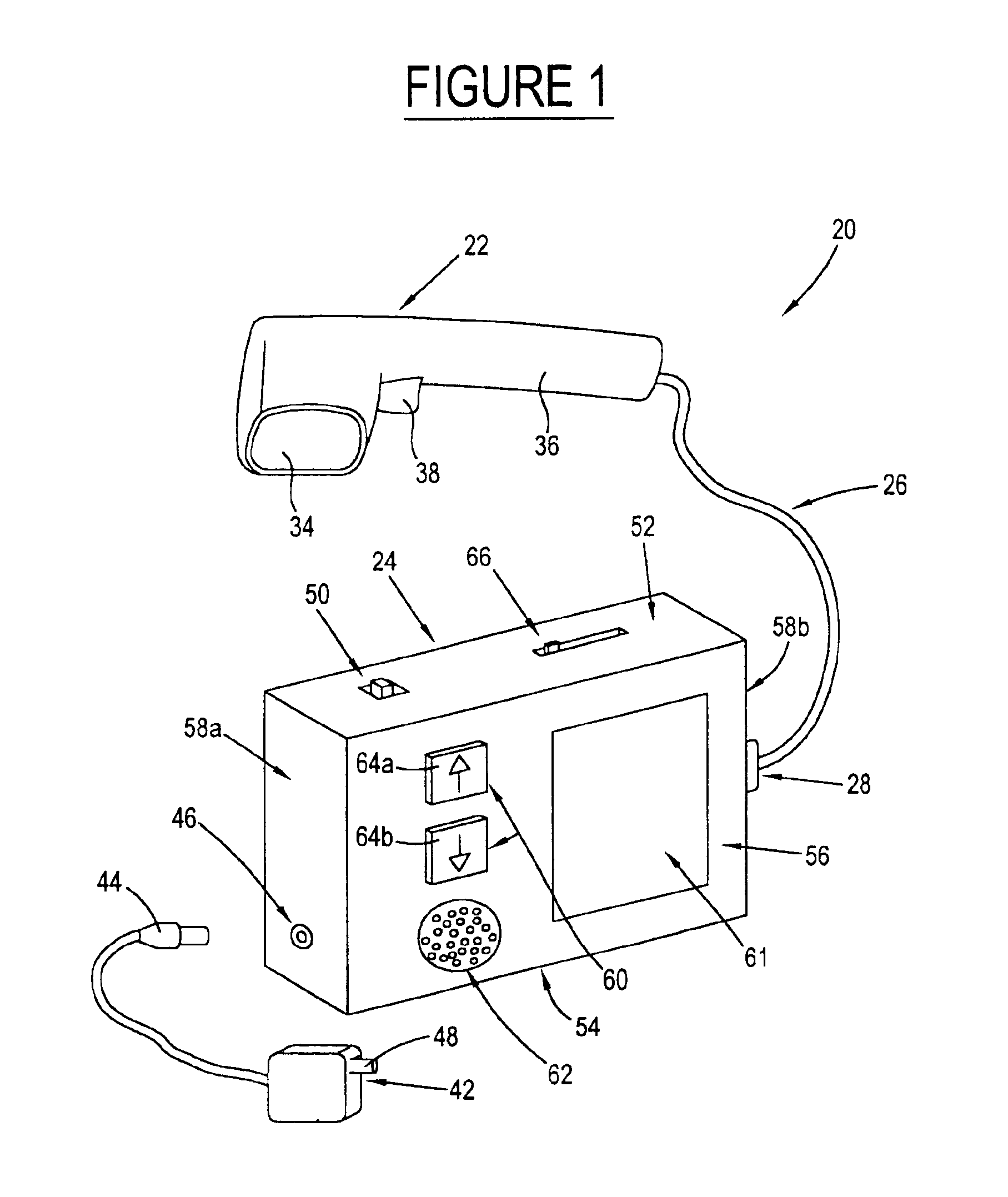Apparatus and method for information challenged persons to determine information regarding pharmaceutical container labels
a technology for information challenged persons and information regarding pharmaceutical container labels, applied in the field of scanning devices, can solve the problems of inability to read text information, inability to provide information which would be helpful, and prior art that does not contemplate nor is it practical for pharmaceutical applications, and achieves the effect of effective and convenient us
- Summary
- Abstract
- Description
- Claims
- Application Information
AI Technical Summary
Benefits of technology
Problems solved by technology
Method used
Image
Examples
first embodiment
In the present invention, see FIGS. 1-5, scanning device 20 is used to scan or read all types of two-dimensional bar code symbologies placed on a medicine container label 32. FIG. 2 shows a medicine container 30 with a two-dimensional bar code label 32 provided thereon. The bar code label 32 may be located anywhere along the exterior of the medicine container 30.
The bar code label 32 contains a two-dimensional symbologies provided on a substrate, such as flexible paper or plastic, which has a self-adhesive side to be affixed to the medicine container 30. Such two-dimensional symbologies include, but are not limited to, Code 49, Code 16K, Data Matrix, Datastrip Code, PDF 417, QR Code, Supercode, and Ultracode. An example of a two-dimensional bar code is one that has the specific information for the medication contained in the symbology provided in multiple adjacent rows that consist of parallel, adjacent bars and spaces, with predetermined width patterns, the arrangement of which rep...
second embodiment
In the present invention, see FIGS. 6-9, a scanning device 20 is used to scan or read a radio frequency identification (RFID) label 40 placed on a medicine container (such as the medicine container 30 show in FIG. 2). RFID labels 40 are commonly referred to as “smart labels”. The RFID label 40 contains the same information as the two-dimensional bar code label 32.
Typically, an RFID label 40 is paper-thin with a programmable integrated circuit, a transceiver, and an antenna mounted on a substrate, such as flexible paper or plastic, which has a self-adhesive side to be affixed to the medicine container. The RFID label 40 may be located anywhere along the exterior of the medicine container 30. The RFID label 40 communicates through radio frequency signals with the scanning device 20.
The RFID label 40 require a memory capacity of between 1.5 kilobytes and 2.0 kilobytes to provide typical prescription information. Alternatively, to reduce memory capacity or maintain a memory capacity of ...
PUM
 Login to View More
Login to View More Abstract
Description
Claims
Application Information
 Login to View More
Login to View More - R&D
- Intellectual Property
- Life Sciences
- Materials
- Tech Scout
- Unparalleled Data Quality
- Higher Quality Content
- 60% Fewer Hallucinations
Browse by: Latest US Patents, China's latest patents, Technical Efficacy Thesaurus, Application Domain, Technology Topic, Popular Technical Reports.
© 2025 PatSnap. All rights reserved.Legal|Privacy policy|Modern Slavery Act Transparency Statement|Sitemap|About US| Contact US: help@patsnap.com



